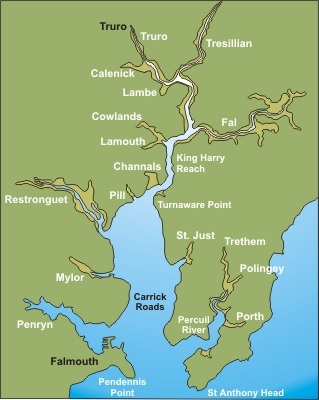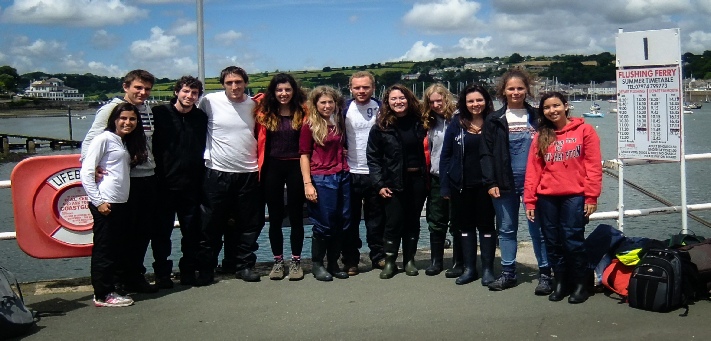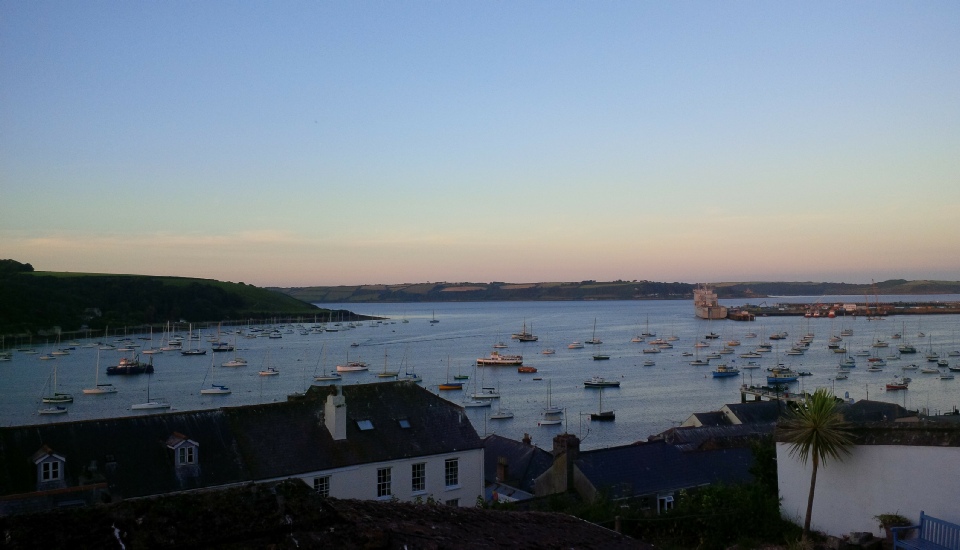Falmouth: Group 2
Falmouth, 2014
Adam Lawrence
Bsc Oceanography
2014 Graduate
Aubrey Hetzler
Animal Science & Oceanography
From Penn State, USA
Aurelia Pereira Gabellini
Bsc Oceanography
From the University of São Paulo
(USP),
Brazil
Catherine Young
Msci Oceanography
Going to the University of Washington,
USA
Emma Lofthouse
Msci Oceanography
Going to the University of Miami, USA
Laila Ecard
Bsc Oceanography
From the Federal University of Bahia, Brazil
Luke Storrie
Msci Marine Biology
Going to the University Centre in Svalbard
(UNIS),
Norway
Maisy Fuller
Msci Marine Biology
Going to the University of Western
Australia,
Australia
Ophelie Humphrey
Msci Marine Biology
Going to the University of Sydney, Australia
Vinicius Laghi
Bsc Biological Science
From the Universidade Federal de Santa
Catarina,
Brazil
Wladimir Fae Neto
Bsc Oceanography
From the Universidade Federal do Rio
Grande,
Brazil
Zoe Holbrook
Msci Marine Biology
Going to the University of Gothenburg,
Sweden
Aim of Study
Through the collection of data including physical, chemical and biological parameters of the estuary, we hope to analyse this information to gain a better understanding of the Fal estuary and the surrounding coastal areas. Examples of topics for consideration include i) the controls on nutrient distribution, ii) the controls on plankton growth, iii) coastal dynamics and benthic habitat mapping, iv) time series of water column structures and v) stability and mixing in estuaries and coastal seas.
This page looks at:
 Back to top
Back to top
 Back to top
Back to top
The Fal estuary in South Cornwall (the worlds third largest natural harbour), is comprised of a number of tidal creeks that feed into a central body of water, known as Carrick Roads (Williams et al., 1998 , Burlinson & Lawrence, 2007). It is an example of a ria; a drowned river valley, formed through a combination of tectonic subsidence and sea level rise. Rias have a low freshwater input, and the area therefore contains a diversity of marine habitats, including a range of species typically found in the South West (Natural England, n.d.). The estuary is macrotidal with a maximum spring tide of 5.3m at Falmouth, but is mesotidal at Truro with a spring tide of 3.5m. At the time of data sampling we were on a neap tide.
In England, European Marine Sites (EMS) are sites designated as Special Areas of Conservation (SAC) under the Habitats Directive. SACs are areas supporting rare, endangered or threatened species and important habitats. (Sites & Area, n.d.)
The Fal & Helford has been selected as a SAC for the following features (Natural England, n.d.):
- Saltmarsh e.g. top of Fal & Ruan Creeks at Ruan Lanihorne.
- Intertidal mudflats e.g. upper reaches of Polwheveral and Frenchman's Creeks.
- Subtidal sandbanks e.g. maerl beds in the Fal Estuary, particularly the live bed on St. Mawes Bank.
- Large shallow inlets and bays e.g. the whole bay from Manacle Point to Zone Point, within this area are habitats such as reefs and rocky shores.
- Estuaries e.g. the Fal Estuary and the Helford Estuary.
- Reefs e.g. St Anthony‟s Head and inshore around Manacle Point.
Due to extensive mining in the Fal estuay catchment area, heavy metal concentrations in the intertidal sediments are the highest in Britain (Warwick, 2001). In 1991, the last tin mine in the Carnon Valley (Wheal Jane) closed and the mine workings and Tailings Dam filled with acidic metalliferous water. A plug in the Nangiles adit gave way in January 1992 causing a massive discharge of this water, via the Carnon river and into Restronguet Creek and Carrick Roads (Somerfield et al., 1994). Over the centuries a marked gradient of metal concentrations has built up in sediments. In otherwise similar creeks (located in different parts of the estuary) have shown levels of heavy metals (including Cu, Zn, As, Cd, Fe) which differ by orders of magnitude (Somerfield et al., 1994).
In the more enclosed areas of the upper Fal Estuary chronic contamination and nutrient-
On Friday 16th May 2014, the Food Standards Agency (FSA) downgraded the quality of the water at Ruan Creek and King Harry Ferry (Pontoon site) to a level C from a level B, due to the high concentrations of E.coli in the water (The Telegraph, 2014). Following the downgrading, a ban on mussel harvesting in the last two ‘clean’ sites on the River Fal (West Briton, 2014) was introduced; as consuming the mussels may cause a risk to human health. Oysters are also likely to be threatened in the future as they are based in the same waterways but take up the bacteria less quickly.
References
Burlinson, F. C., & Lawrence, a J. (2007). A comparison of acute and chronic toxicity tests used to examine the temporal stability of a gradient in copper tolerance of Hediste diversicolor from the Fal estuary, Cornwall, UK. Marine Pollution Bulletin, 54(1), 66–71. doi:10.1016/j.marpolbul.2006.08.047
Natural England, n.d. Fal & Helford SAC Management Scheme. [Online]
Available at:
http://www.google.co.uk/url?sa=t&rct=j&q=&esrc=s&source=web&cd=1&ved=0CCIQFjAA&url=http%3A%2F%2Fpublicatio ns.naturalengland.org.uk%2Ffile%2F3118614&ei=KMywU__yOsSSOOfPgTA&usg=AFQjCNEKDsokDXsFF6QqQbmX_-
[Accessed 30 June 2014].
Natural England, n.d. www.sssi.naturalengland.org.uk. [Online]
Available at: http://www.google.co.uk/url?sa=t&rct=j&q=&esrc=s&source=web&cd=1&ved=0CCUQFjAA&url=http%3A%2F%2Fwww.sssi .naturalengland.org.uk%2Fcitation%2Fcitation_photo%2F2000174.pdf&ei=zdCwU-
[Accessed
30 June 2014].
Sites, E. M., & Area, S. (n.d.). The Fal and Helford, (8).
Somerfield, P. J., Gee, J. M., & Warwick, R. M. (1994). Soft sediment meiofaunal
community structure in relation to a long-
Somerfield, P. J., Michael Gee, J., & Warwick, R. M. (1994). Benthic community structure
in relation to an instantaneous discharge of waste water from a tin mine. Marine
Pollution Bulletin, 28(6), 363–369. doi:10.1016/0025-
The Telegraph, 2014. The Telegraph. [Online]
Available at: http://www.telegraph.co.uk/earth/environment/10844357/Mussels-
[Accessed 30 June 2014].
Warwick, R. . (2001). Evidence for the Effects of Metal Contamination on the Intertidal
Macrobenthic Assemblages of the Fal Estuary. Marine Pollution Bulletin, 42(2), 145–148.
doi:10.1016/S0025-
West Briton, 2014. West Briton. [Online]
Available at: http://www.westbriton.co.uk/Fal-
[Accessed
30 June 2014].
Williams, P. R., Attrill, M. J., & Nimmo, M. (1998). Heavy metal concentrations and
bioaccumulation within the Fal Estuary, UK: A reappraisal. Marine Pollution Bulletin,
36(8), 643–645. doi:10.1016/S0025-

